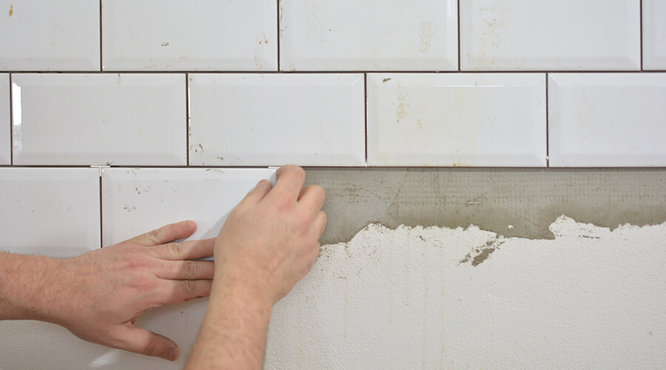Bumpy and uneven spots of your garden lawn can happen naturally and gradually. But, because it’s a slow process, it can happen without you even noticing.
The dips of high and low spots can cause problems. These little areas can become hotspots for weeds, moss, trapped moisture, bald patches, hard lumps, and uneven grass. These aren’t the most attractive features of a garden.
Some buildings even have sloped gardens. Lawns with a steep incline can be a bit of a challenge. Sloped areas are uncomfortable to lounge on. They are more dangerous for children and animals to play on. A sloping garden can also have problems with flooding and soil erosion.
Levelling a bumpy or sloped garden lawn can have plenty of benefits. It adds curb appeal to the property. Landscaping is great for increasing the value of your home, and it showcases the plot well. This is a massive advantage if you’re ever looking to sell.
Lawn and garden levelling can also help with drainage. If you flatten the surfaces, you can design it to direct runoff away from the building or towards gutters. A flat lawn is easier to mow and maintain. A level surface also allows soil to absorb more water. This means that anything growing gets more nutrients, and can thrive.
Last but not least, a level garden can leave you with more usable space.
Why do lawns become uneven?
There’re lots of factors that can lead to uneven patches. Some common causes include -
- Seasonal changes. Waterlogging during rainy periods, frost, and dry patches can buckle and shift the ground.
- Soil settlement. Utility installations and objects underground can affect your lawn.
- Traffic. Areas of lawn that you subject to more action than others can cause problems.
- Animals. Domestic pets, wildlife, and even insects in the ground can have their impact.
- Gardening. Digging, scalping the lawn with a mower, and using garden tools like a rotavator wrong can cause problems. A thin layer of topsoil can also be prone to erosion.
- Escalation. Ignoring the little things can exacerbate problems. A slight depression can become a puddle. A puddle can become a ditch. A ditch can become sunken ground.
Step-by-step how to level a bumpy garden lawn
Levelling small areas
1. Use a shovel to cut an ‘H’ shape into the turf of the affected area.
2. Peel back the turf, trying not to damage it.
3. Fork the base soil. Remove any excess, or add new topsoil to make it level. Be firm when you tamp the earth down.
4. Replace the turf. Check that the area is level, and make any adjustments if they’re needed.
5. When you’re happy with the level, sprinkle a sandy topdressing into the incisions. Tap the edge of each incision so that the sod beds in.
6. Finish by pouring a light sprinkle of water over the area.
You can also use topdressing to level small areas. Spread a mix of topsoil, compost, and fine sand over the low spot of grass. Half an inch of topdressing should be enough. Using too much will end up smothering the grass. Rake the topdressing to spread it out in an even way. Use a brush to work it into the earth. Use a little water to dampen the area, and check to make sure the grass comes through.
Levelling large areas
1. Mark the area. You can use string lines or sleepers for this.
The string method -
- Insert four stakes into the ground, creating a square around the target area.
- Link each stake with a taut line of string. Make sure all four sides of the string are level.
- Measure each side of the square to get a measurement from the ground to the string.
- Note the differences between all high and low spots.
The carpenter’s method -
- Place sleepers along the target area.
- Put a spirit level on the sleeper to see the gradient.
2. Remove the grass. If the area has turf, you will need to uproot the grass and remove it. Lightly water the area over a few days, allowing the soil to absorb the moisture. Water will make the sod easier to remove. You can use a flat shovel to do this. Push the blade 3 to 6cm into the ground, then slide it under the surface to lift out a section. You could also use a turf cutter to do this more accurately and quicker.
3. Add a top layer. When you have the whole area of ground exposed, you can start levelling. Use new soil to fill in sunken spots and to raise low sections. A mix of rich soil mixed with manure and sand offers the best results. Dump the soil across the area, and rake it until you have spread it in an even, consistent layer.
4. Flatten the surface. Compacting the soil can help it settle in and protect it from erosion. If the area is small enough, you can stamp down on the area to achieve this. If the site is large, you can use a garden roller or wacker plate. Use a level to check that the surface is flat and even. If you’re happy, you’ll need to leave the surface for a few weeks before spreading grass seeds or laying turf.
How to level a sloping garden
1. Always make sure if you need planning permission! You’ll need this for any work on the property. There could be utility cables or pipes underground.
2. Measure the run and rise of the slope. Place a stake at the top and a stake at the bottom of the slop. Attach a taut string between both stakes. The string on the top stake should be at ground level. Use a spirit level to check that the line is not on an angle. The length of the string will give you the run. The height of the string on the bottom stake will give you the rise.
The rise gives you the height of the retaining wall that you’ll need to build. If you multiply the run by the rise and divide it by two, you will get the area of the triangle you’ll need to fill to level the space. If you times the area of this triangle by the length of the retaining wall, you’ll get the total area that you’ll need to fill.
Landscapers recommend that retaining walls are no higher than 2 feet. If the wall is any taller, it comes under a massive amount of strain. And, if there is too much pressure from soil and water, the chance of collapse is higher.
So, what if the rise from the bottom to the top of the slope in your garden exceeds 2 feet? You can build a series of step-like terraces. If the space needs quite a few levels, it's best that each terrace is no longer than 5 feet. Installing split-level terraces is more work, but it is safer, and it can look fantastic if done right. Plus, 2 by 5 foot sections are much easier to work out, and that's great for everyone.
3. Build the retaining wall. Use strong materials that offer the look you want.
4. Once you’ve built the wall, you can fill the space behind it. You can buy topsoil for this. Unload the material gradually until the ground is level.
5. When you’ve raised the space and have checked that it’s level, compact the soil. A few passes with a plate compactor should be enough.
6. Plant a new lawn. You can sprinkle grass seeds or install some turf. If you use turf, use a garden roller to settle it down.
How to level a sloping garden with a mini digger
Our step-by-step guide above is for levelling a sloping garden by hand. The process involves raising the ground. In some circumstances, you might need to dig into your land and lower areas instead.
For lowering an area, you can use stakes and string to find the run and rise. You can then use a digger to excavate the land before building the retaining wall. Again, if a single wall would be taller than 2 feet, you can measure the slope in intervals and build terraces.
If you're creating multiple tiers, you can use the cut and fill method to form the terraces. This method is when you excavate soil to lower a section of lawn, and reuse that earth to raise another section.
Top tips
- It is easier to work with damp soil. If there’s decent rainfall when you’re taking on the project, that’s great. If there is a dry period, water the lawn often or use a garden sprinkler. The spring has the best weather for a job like this. There tends to be just the right amount of rain and warmth, and it’s a perfect time for things to grow.
- Even though you are levelling your lawn, the goal is to achieve a flat surface. You don’t want to make the area completely horizontal. A garden should have a slight slope to allow water runoff and prevent flooding. In general, landscapers will aim to have a 1-inch slope for every four feet.
Equipment you might need
Depending on the size of the job, there is a range of tools you might buy or hire to make the project easier.
Garden roller.
Plate compactor.
Rotavator.
Turf cutter.
Brush cutter.
Tree stump grinder.
Fence post puller.
Mini digger.






